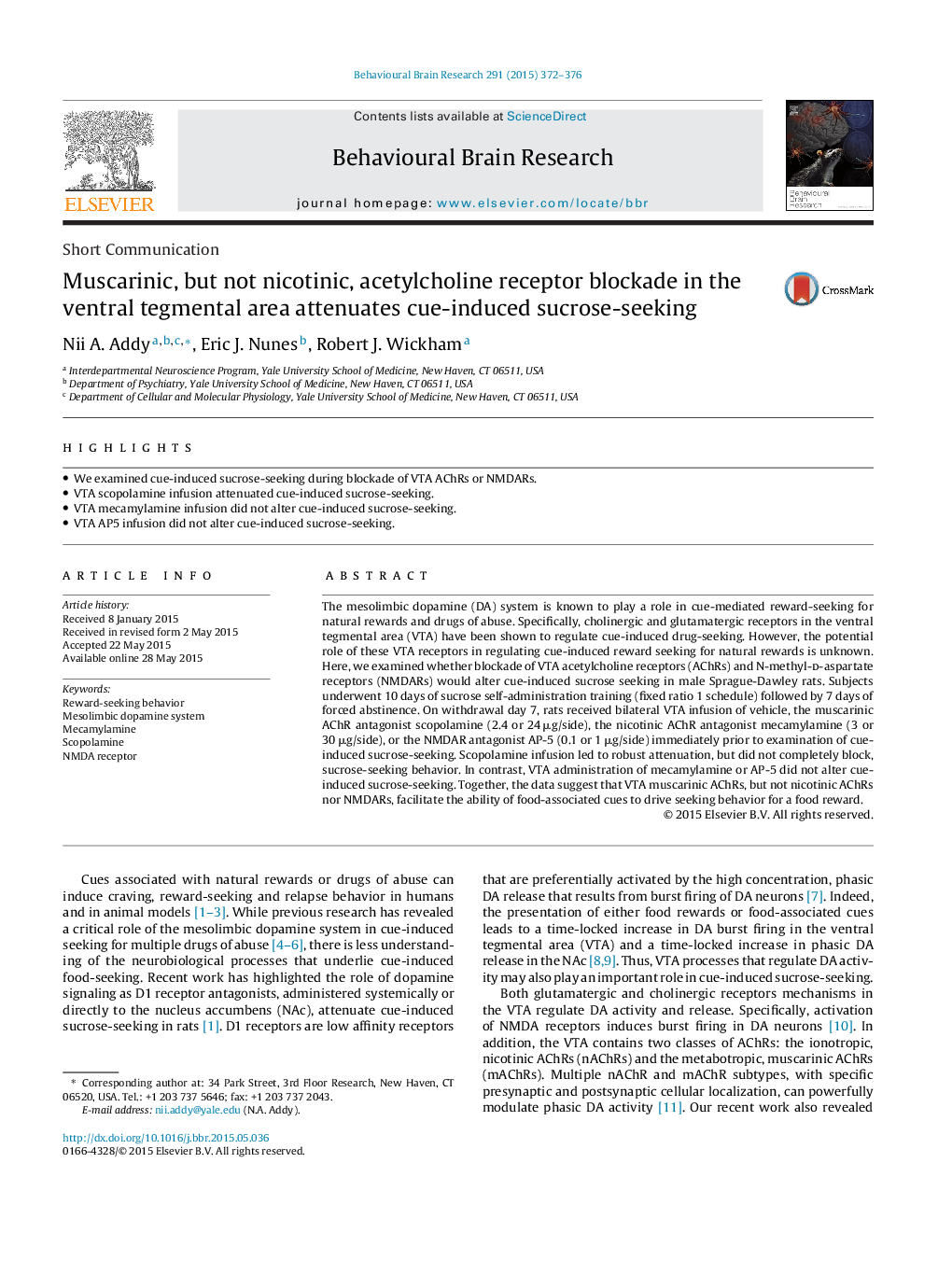| Article ID | Journal | Published Year | Pages | File Type |
|---|---|---|---|---|
| 4312418 | Behavioural Brain Research | 2015 | 5 Pages |
•We examined cue-induced sucrose-seeking during blockade of VTA AChRs or NMDARs.•VTA scopolamine infusion attenuated cue-induced sucrose-seeking.•VTA mecamylamine infusion did not alter cue-induced sucrose-seeking.•VTA AP5 infusion did not alter cue-induced sucrose-seeking.
The mesolimbic dopamine (DA) system is known to play a role in cue-mediated reward-seeking for natural rewards and drugs of abuse. Specifically, cholinergic and glutamatergic receptors in the ventral tegmental area (VTA) have been shown to regulate cue-induced drug-seeking. However, the potential role of these VTA receptors in regulating cue-induced reward seeking for natural rewards is unknown. Here, we examined whether blockade of VTA acetylcholine receptors (AChRs) and N-methyl-d-aspartate receptors (NMDARs) would alter cue-induced sucrose seeking in male Sprague-Dawley rats. Subjects underwent 10 days of sucrose self-administration training (fixed ratio 1 schedule) followed by 7 days of forced abstinence. On withdrawal day 7, rats received bilateral VTA infusion of vehicle, the muscarinic AChR antagonist scopolamine (2.4 or 24 μg/side), the nicotinic AChR antagonist mecamylamine (3 or 30 μg/side), or the NMDAR antagonist AP-5 (0.1 or 1 μg/side) immediately prior to examination of cue-induced sucrose-seeking. Scopolamine infusion led to robust attenuation, but did not completely block, sucrose-seeking behavior. In contrast, VTA administration of mecamylamine or AP-5 did not alter cue-induced sucrose-seeking. Together, the data suggest that VTA muscarinic AChRs, but not nicotinic AChRs nor NMDARs, facilitate the ability of food-associated cues to drive seeking behavior for a food reward.
